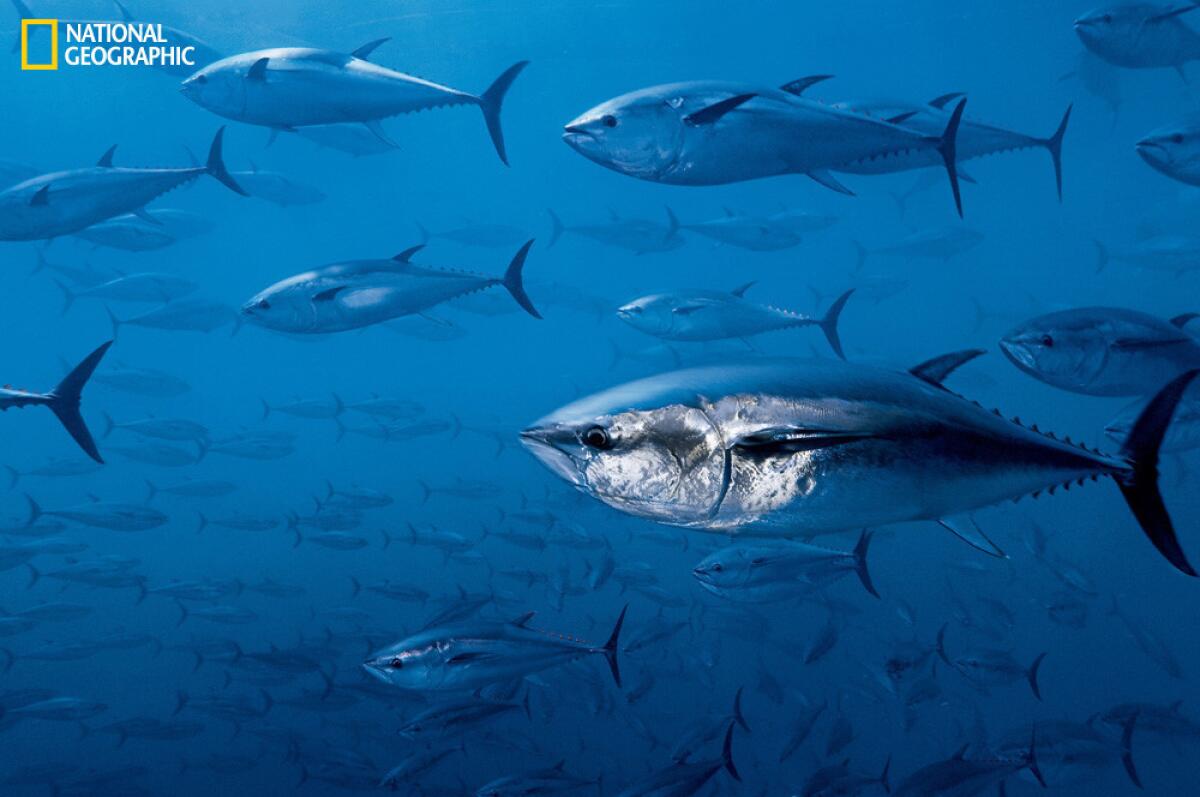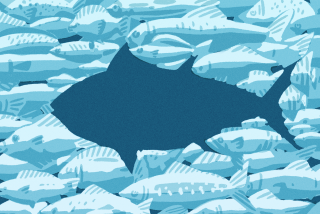Can we save the bluefin tuna? National Geographic investigates

- Share via
I’ll never forget the first time I saw a bluefin tuna in person. It was at the Monterey Bay Aquarium’s open sea exhibit, a tank so huge the back wall disappears in the ocean’s vastness, just as it does when you’re actually in the water. Schools of fish flitter past, appearing and then vanishing. And then, dimly at first, here comes the tuna, ambling along shiny and silver and aerodynamically perfect as a rocket ship. As it slowly draws closer you realize that it’s seriously huge -- about the size of your old Volkswagen Beetle. And then something spooks it and with a flick of its tail, it rockets away – far faster than that old wreck ever moved.
If ever a fish deserved to be described as awesome – in the original meaning of that much-overused word – it is the bluefin tuna. And, paradoxically, because of its beauty and its flavor, it is one of the most threatened fish in the sea. A must-read article by Kenneth Brower in the March issue of National Geographic magazine does a terrific job of laying out the sorrowful facts.
(If you just want to look at gorgeous pictures, there’s a terrific online photo gallery by Brian Skerry; and if you’re curious about eating tuna, there’s an online guide by A.R. Williams.)
Because not only are bluefin tuna among the most hunted animals on Earth (a typical medium specimen normally fetches $10,000 to $20,000 at auction), but they are also among the most poorly protected.
There is an organization designated to do this, the International Commission for the Conservation of Atlantic Tunas, but until relatively recently it was so inept that an independent review ordered by the organization itself described it as an “international disgrace” and a “travesty of fisheries management.” (Since 2009, Brower reports, the commission has begun responding to this criticism and has been correcting its shortcomings.)
There is hope, though, as marine biologists are learning more about the tuna every day. And some of what they’re learning is reshaping the way we think about the fish.
For example, we have always separated the Atlantic bluefin into two distinct, though virtually identical, families – western and eastern – and believed that the two existed (and are managed) separately. While the western stock was acknowledged to be seriously troubled (the population has been reduced by 64% since 1970), it was believed the eastern group could still be safely caught. The reality, as revealed by satellite tracking, is that there is a huge area of overlap where the catch could be confused.
It’s all coming not a moment too soon. The stakes at this point could hardly be higher. So many bluefin have been caught that the surviving population soon will be unable to reproduce enough new fish to survive as a species.
Think about that the next time you take a seat at your favorite sushi bar.
ALSO:
Fake chef fools local news anchors
Need spices? Don’t go to the grocery
More to Read
Eat your way across L.A.
Get our weekly Tasting Notes newsletter for reviews, news and more.
You may occasionally receive promotional content from the Los Angeles Times.











